How my odious cousin Roy Cohn was responsible for creating Donald Trump — and me
For this author, ‘The Apprentice’ is a chillingly accurate film that hits way too close to home
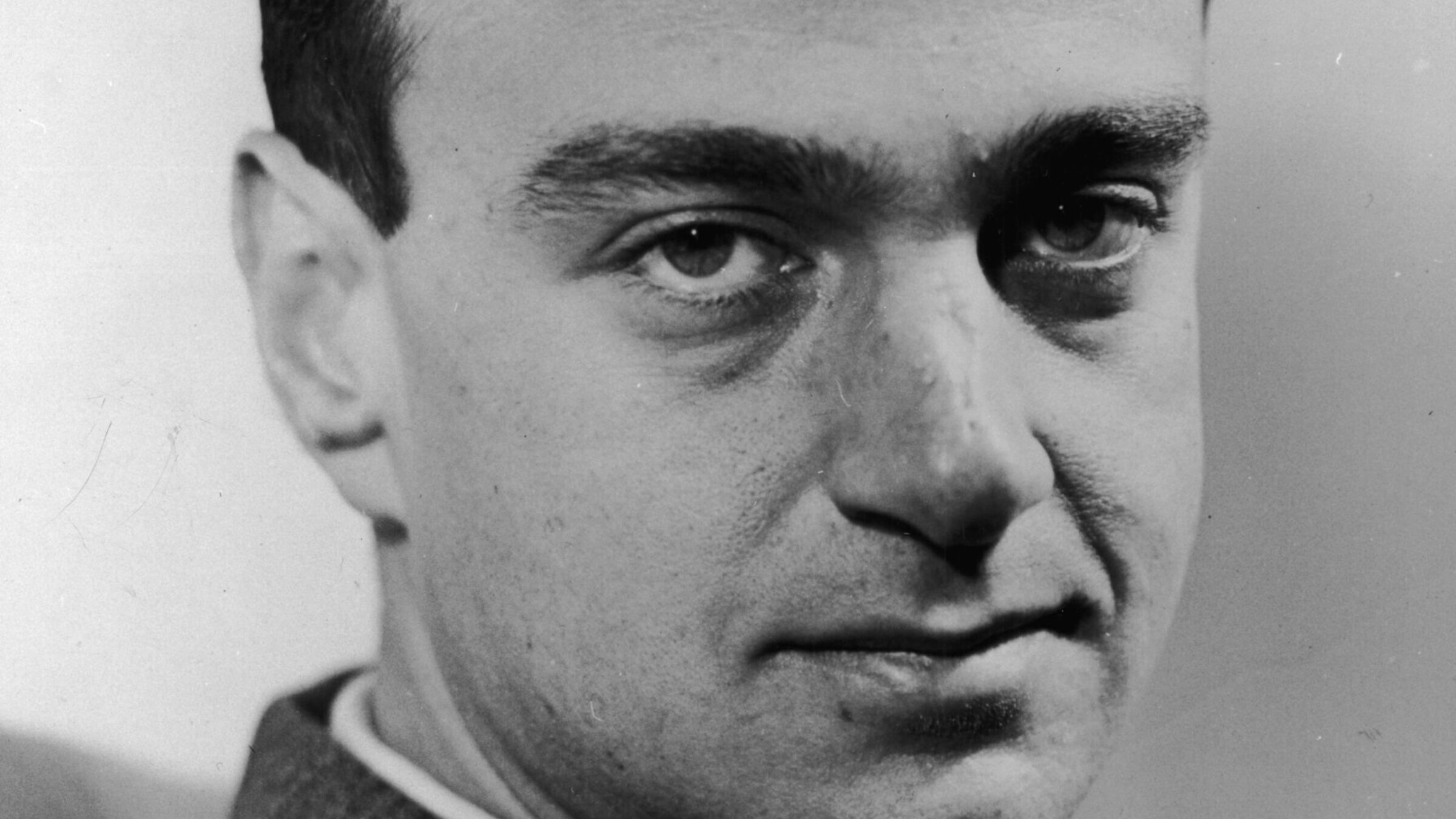
Portrait of Roy Cohn, circa 1959. Photo by Getty
Forgive me if I’m cynical about humanity. I just stumbled into sunshine from the darkness of a screening of The Apprentice, the stunning fictional-yet-fairly-factual film about Donald Trump and his mentor Roy Cohn.
That’s Roy Marcus Cohn, my odious cousin.
These 120 minutes in the theater unearthed so many memories that now I’m reeling from PTCSD: Post Trump-Cohn Stress Disorder.
With a bit of artistic license, The Apprentice illuminates the truths that several documentaries have depicted. We see Roy molding Trump out of a lump of formless clay. We watch Trump wallow in Roy’s world of chicanery and bribery, bold-type gossip pages and bald-faced lies.
I’ve long thought of Trump as Roy’s acolyte, his disciple. But “The Apprentice?” Ah. Nice wordplay.
Let’s pause for a personal disclaimer-plus-trigger warning.
Roy and I shared one trait: devotion to the bubbly, optimistic Libby Marcus — my Grandma Libby, Roy’s Aunt Libby. Libby was staunchly loyal to family. No matter if you were an awkward dork (me) or an indicted perjurer (Roy) or a disbarred attorney (Roy) or a possible murderer (Roy). Or even if the IRS slapped liens on your property for evading millions of dollars of taxes (Roy again).
It’s easy to loathe everything Roy represented: The self-hating homophobia. The peculiar antisemitic behavior of a Jewish person a couple of generations removed from the shtetl. The flag-waving, faux family-values conservatism, drenched in hypocrisy.
Speaking of hypocrites: In the heady heyday of the 1980s, I briefly met The Donald several times at Cousin Roy’s birthday parties. That was when the self-proclaimed Real Estate Tycoon was overleveraging, putting himself on the path to bankruptcy. He was bamboozling bankers and journalists — as Roy manipulated him like a marionette.
Since childhood, I’ve known that I owe my existence to Roy Marcus Cohn. More about that in a moment.
The real Roy
If you finished high school after 1980, you might not comprehend the sweep of Roy Cohn’s pernicious, perfidious four-decade-long career. Here’s the SparkNotes version (skip this section if you know why Roy’s shenanigans provoked Joseph Welch to say, “Have you no sense of decency, Sir?”).
Roy was an obnoxious wunderkind. He graduated from Columbia Law School at age 20. His mother Dora Marcus Cohn was a helicopter mother before anyone knew the term. She was so protective of her only son that she rented a cabin down the road when Roy went to sleepaway camp. Roy’s father Al Cohn, a judge, introduced Roy to New York’s dealmakers.
This country will never again have an unelected person who wields so much influence for so many years on politics and the media. Never.
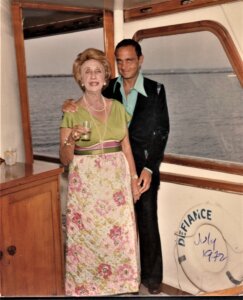
In the 1950s, Roy was a prosecutor in New York who sent Julius and Ethel Rosenberg to the electric chair on overhyped espionage charges (Roy revealed that he made ex parte — illegal — calls to the judge). Then, in D.C., Roy was chief counsel to the drunk demagogue Senator Joseph McCarthy. They destroyed lives and careers while persecuting so-called “Communists and homosexuals.”
Roy went too far: He pushed that Wisconsin Weirdo to take on the U.S. Army in the first Congressional hearings to be televised live. McCarthy died in ignominy. Somehow, Roy reinvented himself. Back in New York, he was the attorney-consigliere to Yankees owner George Steinbrenner, ultraconservative Francis Cardinal Spellman and Mob boss Anthony “Fat Tony” Salerno.
Roy befriended Republican bagman Roger Stone and helped elect Ronald Reagan. Soon after, Roy’s pal Rupert Murdoch got the Reagan administration’s blessing as he amassed the television stations that became Fox News.
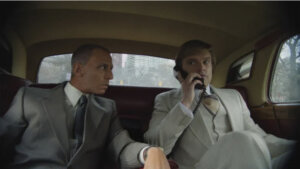
As The Apprentice opens in 1973, Roy meets dimwit Donald (played convincingly by Sebastian Stan). The U.S. Justice Department is suing the Trump Organization, run by Donald and his father Fred, for refusing to rent apartments to Black tenants.
The film gets it right: Other attorneys advised the Trumps to quietly pay a fine and settle. But not Roy. He goaded Trump to countersue the government for $100 million. Roy shared his three golden rules with Donald: Attack, attack, attack. Deny everything. And “no matter what happens, never admit defeat.”
Sound familiar 50 years later?
Another Roy-ism: “Don’t tell me what the law is, tell me who the judge is.”
Hello, Judge Aileen Cannon!
Seeing evil up close
All happy families are alike; every dysfunctional family has its own tragic history. My grandfather Bernard Marcus — Roy’s uncle — was president of a thriving bank in the Roaring Twenties. But in the Great Crash of 1929, the WASP bankers helped each other, making Bernie a scapegoat.
Oddly, Bernie and his business partner Saul Singer were the only ones convicted of wrongdoing amid that wave of bank failures. The two Jewish guys. I’m not paranoid (about this subject, anyway). You can read economists such as Milton Friedman, who argued that the establishment financiers resented the Jewish interloper.
In the early 1930s, young Roy visited his Uncle Bernie in the maximum-security Sing Sing prison. The experience shook Roy. He spent the rest of his life railing against “the establishment,” even after he became the establishment.
Fast forward to the 1950s:
Libby Marcus went to a dinner party. A woman across the table let loose with a tirade about reprehensible Roy Cohn ruining the country. As soon as Libby returned home, she slipped a note under the bedroom door of her son Lloyd. It said, essentially, “There’s someone named Alice you need to meet. Here’s her phone number.”
A year later, Alice and Lloyd got married. Yes, my progressive parents met because of Roy Cohn.
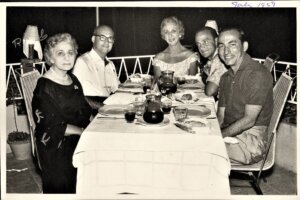
Here’s the part of my story that I rarely share. But what the heck.
In April 1959, on Passover, Alice and Lloyd joined relatives at a seder at Dora Cohn’s apartment. Alice, pregnant, grew increasingly irritated as Roy expounded on the dangers of “liberals and Commies” and thunderously answered the phone (a landline), making sure everyone could hear him advising the country’s machers.
That night, Alice had a miscarriage. Fourteen months later, she gave birth to me.
“I guess I should thank you,” I once told Roy. “I exist because you’re a loudmouth.”
That’s when I was a student at Brown University, researching a paper on McCarthy’s witch hunts. Who better to ask than Cousin Roy? Also during college, I interviewed him about the Rosenbergs and my grandfather’s Bank of United States.
The ritual: I’d wait in a cramped hallway of the six-story townhouse off Park Avenue where Roy lived and worked amid dozens of toy frogs. Phones jangled. A parade of people came in and out, including impossibly handsome young men who seemed to be models. Or something.
When Roy finally talked to me, two or three hours late, he’d slip in gossip about friends like Estee Lauder and Andy Warhol.
Roy became especially animated when confronted with provocative questions. I decided only a few topics were untouchable. I never asked about the mystery of the creaky 97-foot yacht, Defiance, which burned and sank in 1973. Roy’s firm had leased the yacht through a dummy corporation. A 21-year-old crew member died. His father wondered aloud if Roy was a murderer, noting that Roy’s law firm reaped $200,000 in insurance payments.
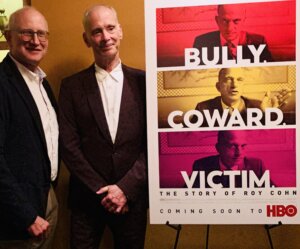
As a journalist in the mid-1980s, I shadowed Roy for the good part of a year for a Vanity Fair story. Reclining next to Roy in the back seat of his Rolls Royce with the “RMC” license plate, I noticed his legendary photographic memory was fading. His hands shook. He claimed he had liver cancer.
As a cousin, I didn’t need to be discreet. In December 1985, we sat on a pool deck in Palm Beach. I looked at his emaciated body. His kind boyfriend Peter Fraser, 30 years younger than Roy, hovered nearby.
“They say you have AIDS,” I offered to Roy.
“It’s a smear campaign,” he replied. He paused, pursing his lips. “Of course, I have been a high-risk candidate.”
Seven months later, at age 59, Roy died of complications of HIV.
The IRS seized the townhouse, the Rolls Royce and my favorite painting of Roy, by Norris Church Mailer (Norman Mailer’s sixth wife). The feds didn’t bother taking a pair of diamond cufflinks that Trump had recently given Roy. The diamonds were fake.
Roy’s tombstone, in the middle of our family crypt, has the descriptor he chose: “LAWYER AND PATRIOT.” He’ll taint our name through eternity.
I refuse to be buried there, even though I’ve been offered a discount.
Fictional but true
Over the years, I’ve watched plausible portrayals of Roy, starting with Al Pacino in HBO’s adaptation of Angels in America. Now Jeremy Strong weighs in with a chilling performance. He embodies Roy — his haughtiness, his pettiness, his Potemkin-pretend patriotism.
And he masters Roy’s tics. Roy spoke in elegantly polished paragraphs, unlike Trump. He had a nasal, straight-outta-Bronx voice. Roy’s tongue used to dart from his thin lips, in a reptilian way.
The Apprentice suggests what some observers (me) always suspected: The preternaturally ugly Cohn was attracted to the towering, handsome Trump. I’m talking Trump in his late 20s and early 30s — not the bloviated buffoon of the 21st century.
In a memorable scene, Trump reveals that he’s getting married to model Ivana Zelníčková. Roy looks devastated, then recovers by demanding that Trump draw up a prenup. Like much of the film, this is true in the broader sense, mixing fact and dramatic flourish. We don’t know if Roy felt rebuffed by the object of his desire; we do know he drew up an onerous prenup for Ivana.
Another unforgettable moment: Trump sexually assaults Ivana after an argument. Bravo to the courage of director Ali Abbasi and writer/executive producer Gabriel Sherman! (Ivana testified to this under oath, but later denied it.)
When Roy was dying, a gaggle of friends called and visited. Donald Trump, though, vanished. Perhaps because Trump is a germaphobe and thought AIDS was airborne. More likely because the transactional Trump realized that Roy — indicted, debilitated and about to be disbarred — was no longer useful.
In the film’s haunting penultimate scene, Trump spurns Roy in public. That’s creative fiction. Trump doesn’t have the guts to fire anyone in person outside a reality show. In those final months, speaking in a voice that had turned to a whisper, Roy admitted to me that he was disappointed in the silence from “ice cold” Trump.
Spoiler alert:
The film concludes with Trump pushing Roy in a wheelchair through Mar-a-Lago. Well, that never happened. Donald J. Trump is not one for rapprochement. Plus, we know he stays far from wheelchairs and people who need them. He told his nephew Fred Trump III that disabled people “should just die.”
This film won’t sway opinions. It won’t get my MAGA neighbors rockin’ with Oprah and Taylor Swift at a Kamala Harris fundraiser. But it faithfully shows Donald becoming Roy, the mentee morphing into the mentor.
“You create your own reality,” Roy says early in the film. Or maybe Donald says that.
Roy? Donald? In the end, it really doesn’t matter.
















